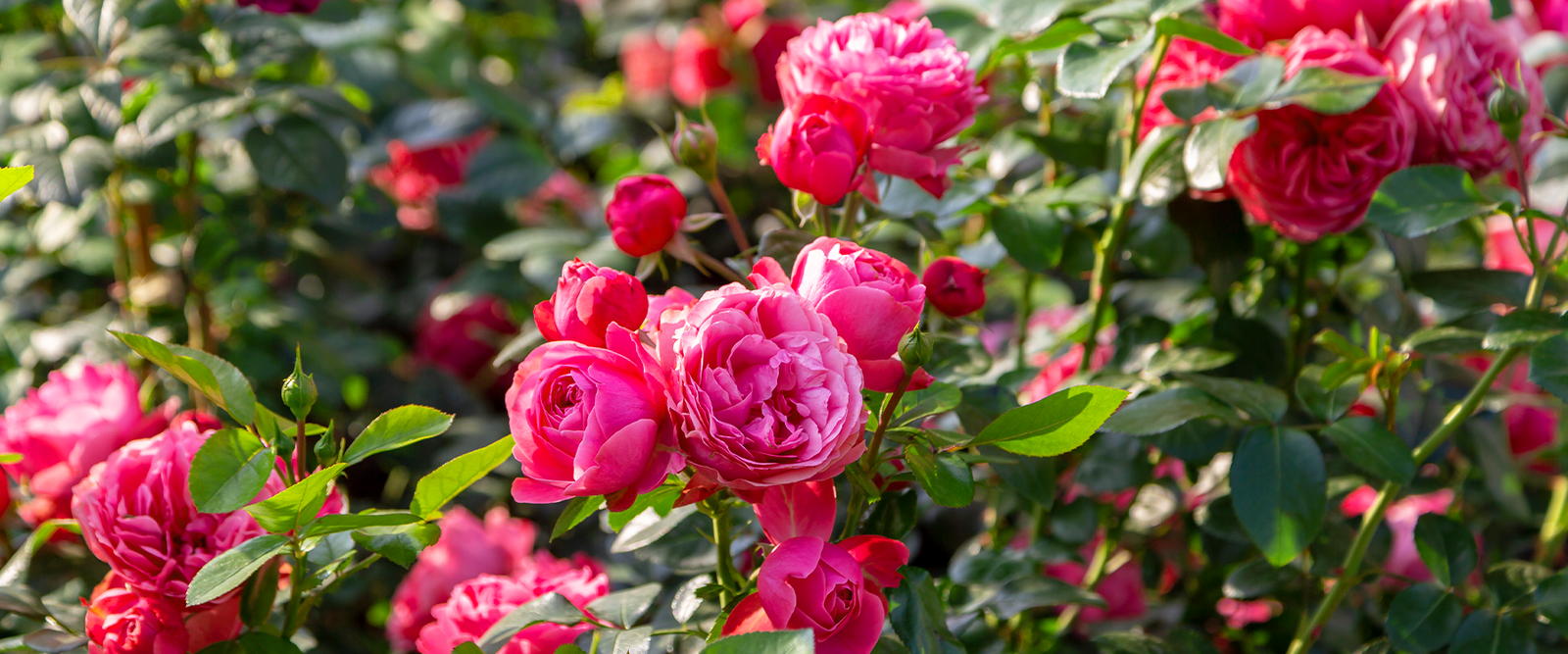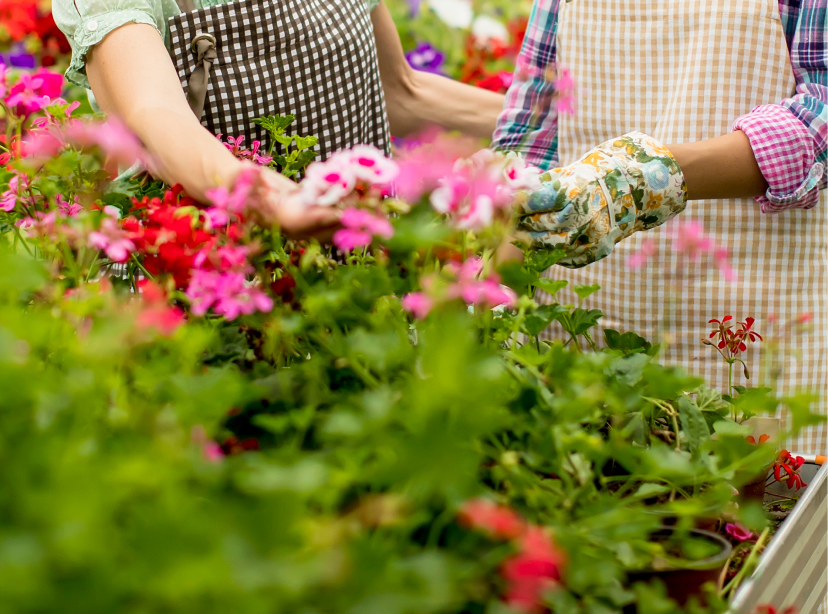Roses are well-known for their beauty and fragrance. They are a common feature in many gardens, yet many gardeners find it intimidating to plant and grow healthy roses. However, roses can be simple to grow and maintain. To make the process easier, we’ve compiled a guide to growing roses to help simplify the process for new and advanced gardeners.
Choose the Right Roses
Shrub Roses
One of the easiest rose varieties to grow is shrub roses. They're disease-resistant, low maintenance, and produce beautiful flowers all summer. They're also ideal for any garden landscape because they come in many different sizes.
There are three popular kinds of shrub roses among avid and pro gardeners:
1. Knockout Roses
This shrub rose variety is a consistent best-seller and favorite among many gardeners. Knock Out roses have a wide color range with flowers that bloom in summer through the end of fall. This medium-sized shrub grows as wide as it is tall and nicely complements a bank along a fence or mixes well with other perennials and shrubs.

2. Drift Roses
Drift Roses are a newer breed of shrub roses. They grow tiny flowers and make excellent groundcover to disguise bald spots in your garden due to their thickness and width. They also look great added to a flowerbed of herbs, annuals or perennials to bring color to your patch.
3. Easy Elegance Roses
These roses are known for both their fragrance and easy-care qualities. They're bred to withstand diseases and extreme weather. They look their best when planted in a sunny spot and with daily waterings, especially in the mornings.
Fragrant Roses
Fragrant roses are another popular choice among gardeners due to their beauty and fragrance. In the past, fragrance was secondary to other factors like disease resistance and ease of planting among gardeners. However, today there are many varieties of fragrant roses that are also easy to plant and resistant to disease. Gardeners can plant fragrant roses without sacrificing other important qualities. Several popular types of fragrant roses include Rambling Rose, Yellow Brick Rose, Heritage roses among others.
Choose where to plant your roses
Generally, all roses thrive in sunny and moist areas when the soil is well-drained and organically rich. Roses need at least 6 hours of direct sunlight in order to bloom and resist pests and diseases. While there are some varieties of roses that tolerate partial shade better than others, no roses thrive in full shade.

Know how to plant
Shrub Roses are available in a few forms, including bare-root and container-grown.
Bare-root roses are usually available during early spring and are sold as a set of roots packed in moss or a similar material to retain moisture. They're inexpensive and low cost. We recommend purchasing them when they're beginning to grow or just dormant. While bare-root is an ideal form of planting, there can be a long wait time before you see blooms.
Container-grown roses are more expensive, but relatively easier to plant. As with any other perennials or shrubs, they can be planted in spring, summer, or fall. However, we do not recommend planting them in extreme heat because it will put a lot of stress on the plant. Dig a hole about twice as wide (but not deeper) than the rose’s container. Remove the container and loosen the roots before you plant them.
PRO tip: Make sure you water your roses after planting, especially if you plant in the summer when they are more prone to drying out. Keep watering them regularly for the first few weeks. Add a 2 to 3-inch-deep layer of mulch to maintain moisture and prevent growing weeds.

Prune and deadhead carefully
Regular pruning will keep your rosebushes healthy and blooming, but it’s important not to over-prune. Ideally, you should prune your roses during early spring when their leaves start to bud. Although it's not required, pruning your roses yearly with sharp bypass pruning shears will keep the shrub an ideal size and make it easier to maintain.
Shrub roses are meant to bloom continuously, and when you deadhead your roses, you encourage healthy and non-stop bloom throughout summer until winter. The withered flower should be cut to the nearest leaf to prevent disease and encourage growth of more beautiful flowers.
Water roses properly
Roses need moisture to keep them healthy and blooming. Most roses are not drought tolerant, so it’s important to water them through the roots – it will encourage growth and reach further into the soil to stay moist longer. You can use a soaker hose to keep the leaves dry when you’re watering, which helps prevent disease.
Apply fertilizer with care
Fertilizer is not a bad thing, especially if you have poor soil conditions. However, be careful not to over-fertilize your roses. If you have good soil conditions or add compost or other organic matter to your planting ground, you won’t need to fertilize often.
Do take note that if your roses are grown in containers, you need to feed them regularly as they will not receive the same nutrients as roses planted in the ground.
Protect roses during winter

If you live in a colder area, you will need to protect your roses during winter. Wait until the ground is frozen and experiment with any of these methods:
1. Mulching
Cover your soil with several inches of loose mulch. Try using weed-free straw, pine needles, or wood chips. Mulching is a great way to keep your roses healthy during winter.
2. Use a rose cone
Make a mound of soil over the rose crown, and then cover the entire rose plant with a foam cone. Make sure to create holes in the cone for ventilation, and attach an anchor so it won't blow away during high winds.
3. Use containers
If your roses are planted in containers, make sure to move them to a better spot during winter. Ideally, find a cool place for them in a garage, storage shed, or even the basement, as long as it stays cooler.
Growing roses doesn’t have to be a daunting task. Read how-to guides and tips for growing roses, experiment with different methods, continue learning, and invest in the right tools. We’re confident that you’ll enjoy a beautiful garden full of blooming roses in no time. Happy planting!




